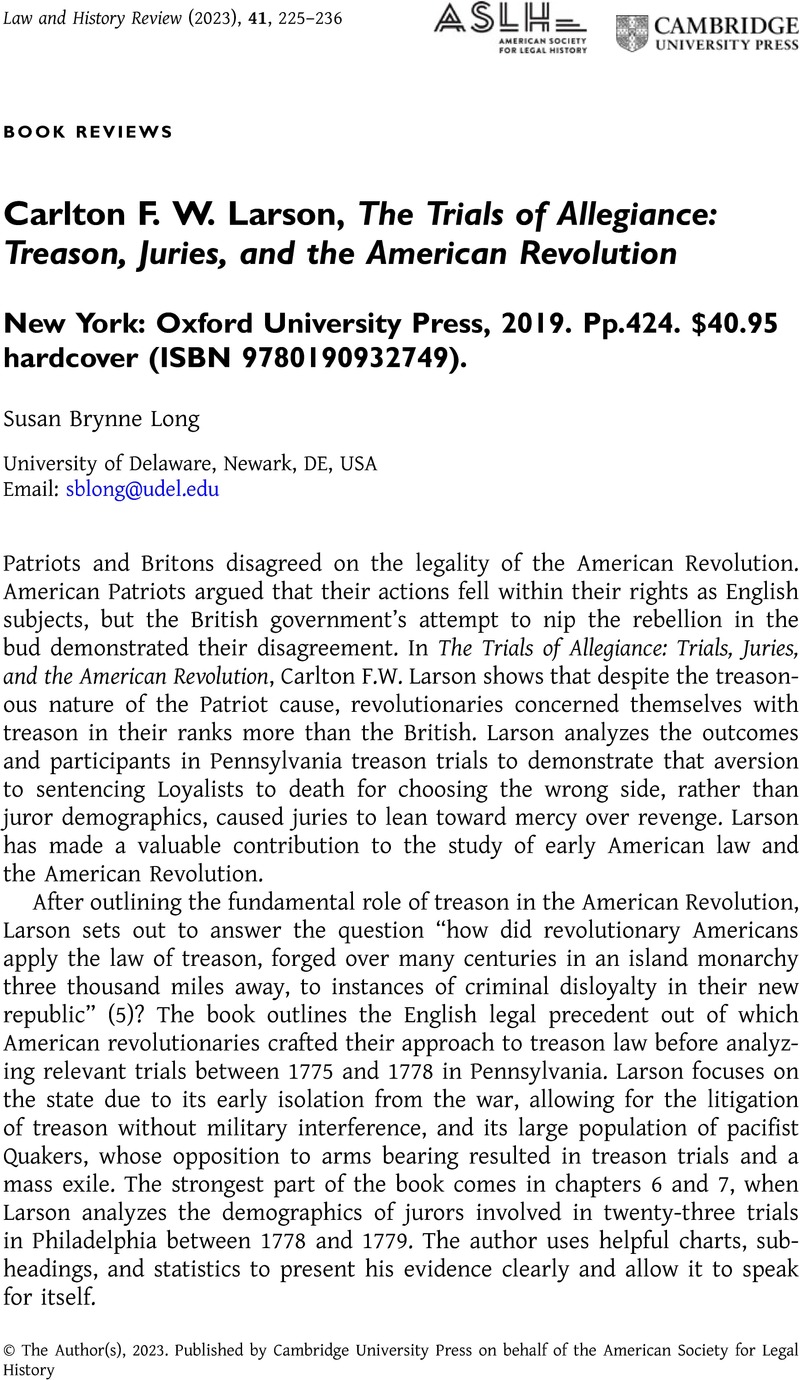No CrossRef data available.
Article contents
Carlton F. W. Larson, The Trials of Allegiance: Treason, Juries, and the American Revolution New York: Oxford University Press, 2019. Pp.424. $40.95 hardcover (ISBN 9780190932749).
Review products
Carlton F. W. Larson, The Trials of Allegiance: Treason, Juries, and the American Revolution New York: Oxford University Press, 2019. Pp.424. $40.95 hardcover (ISBN 9780190932749).
Published online by Cambridge University Press: 18 April 2023
Abstract
An abstract is not available for this content so a preview has been provided. Please use the Get access link above for information on how to access this content.

- Type
- Book Review
- Information
- Copyright
- Copyright © The Author(s), 2023. Published by Cambridge University Press on behalf of the American Society for Legal History


